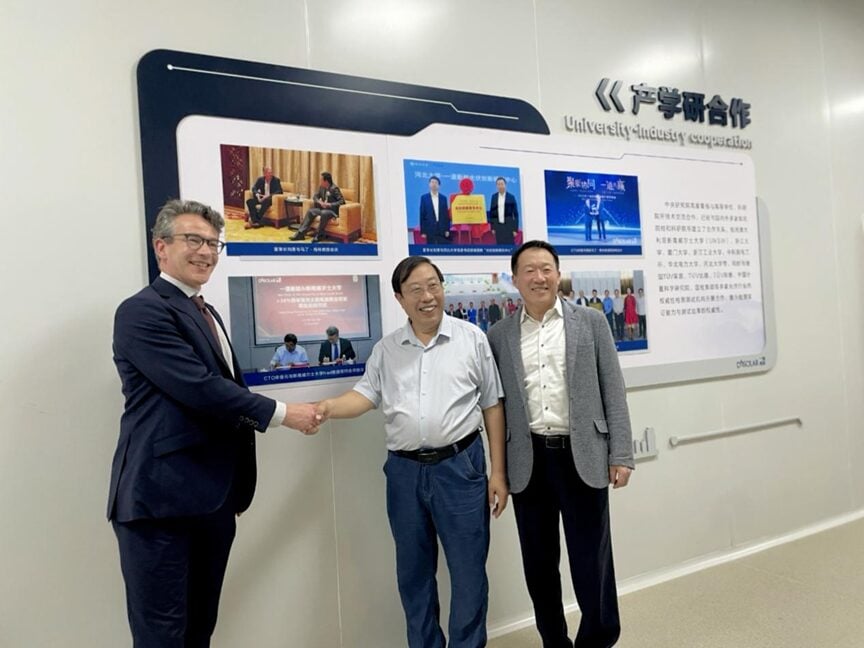
A team of seven researchers from the University of New South Wales PV Laboratory, led by Professor Ned Ekins-Daukes, has visited DAS Solar’s central research institute. The visit stems from a joint research agreement signed in May 2023 between the two parties, with a shared ambition of achieving a 40% cell efficiency through SFOS multi-photon technology.
Dr. Dengyuan Song, DAS CTO and head of its research institute, joined Kangping Zhang, deputy director of the institute and GM of R&D, in holding in-depth discussions with the UNSW team, focusing on the latest advances and commercialization prospects for high-efficiency SFOS cell technology.
With a 746 mV open-circuit voltage and a 27% mass-production efficiency, DAS’ TOPCon 5.0 technology not only demonstrates the company’s technological leadership, but also provides a solid foundation for engineering the SFOS device, accelerating industrialization and cost reduction.
Moving to discussions on the key scientific and engineering aspects of SFOS technology, several recent breakthroughs to have emerged from the collaboration were highlighted, a major advancement lying in the discovery of highly stable singlet fission materials. These materials can effectively generate multi-photon effects through the transfer of triplet excitons, providing new possibilities for significantly enhancing cell efficiency.
The research team has also made meaningful progress in developing interlayer materials for SFOS structures, serving as a crucial interface between the TOPCon base cell and the upper photon-conversion layer, enabling the rapid and efficient migration of photogenerated carriers to the PN junction for extraction. This interlayer functionality is essential to ensuring high current generation and seamless charge transfer across the device.
DAS Solar places strong emphasis on academic-industry collaboration, actively working with leading domestic and international universities to drive innovation and industrial upgrades. In addition to its strategic partnership with UNSW, the company collaborates with top Chinese institutions, including Zhejiang and Xiamen universities, to explore next-generation PV technologies and enhance core competitiveness.
